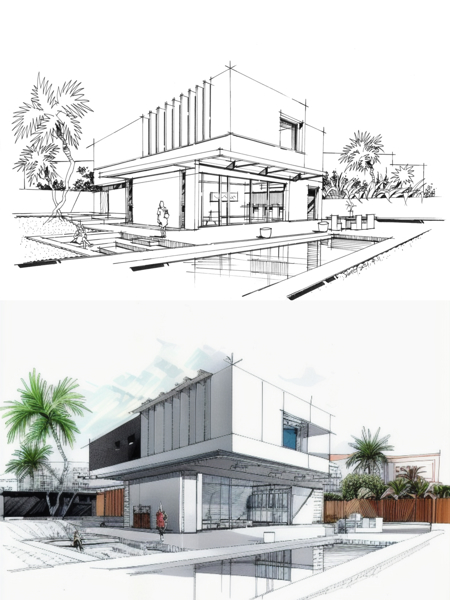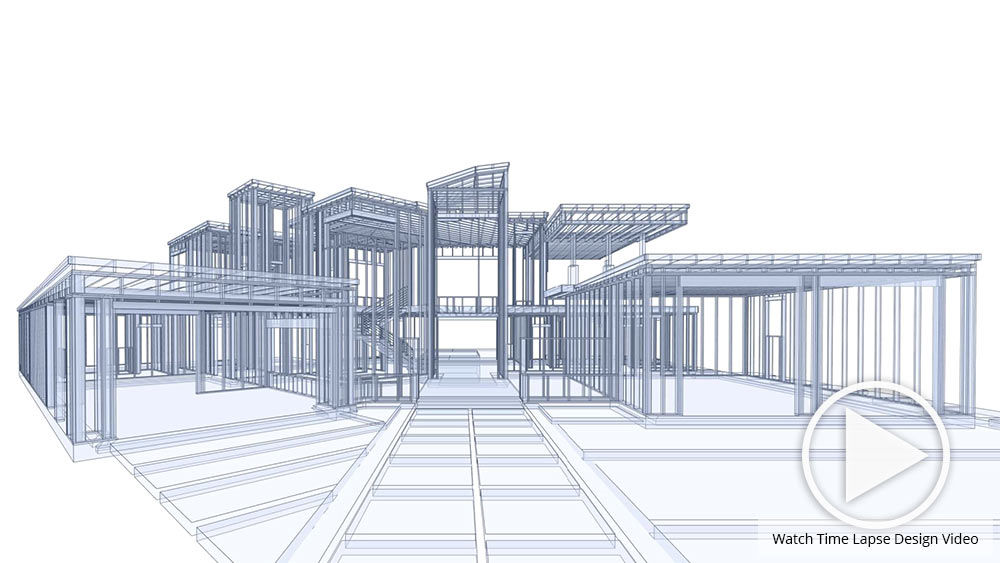How CDA Architects Combine Creativity and Functionality in Modern Style
How CDA Architects Combine Creativity and Functionality in Modern Style
Blog Article
A Comprehensive Introduction of Architectural Designs and Their Impact on Modern City Planning and Advancement
Building designs have long offered as a mirror to the societal values and technological improvements of their time, playing an important function in forming contemporary city planning and advancement. From the splendour of Neoclassicism to the practical strategy of Brutalism, each design has presented one-of-a-kind concepts that influence urban visual appeals and capability.
Historic Introduction of Building Designs

As cultures transitioned via the Center Ages, Gothic style arised, characterized by its verticality and elaborate detailing, matching the spiritual goals of the age. The Renaissance noted a revival of classical perfects, merging art and architecture in ingenious methods that influenced subsequent styles across Europe.

Today, building styles continue to advance, driven by globalization and sustainability issues, mirroring a dynamic interaction between heritage and development. This historic introduction emphasizes the value of design as a mirror of social development and as a stimulant for urban growth.
Trick Architectural Styles Explained
The diversity of building designs shows the myriad impacts that shape our built setting, each personifying distinctive attributes and social significances. Key building designs include Classic, Gothic, Baroque, Modernism, and Postmodernism, each representing one-of-a-kind historical contexts and visual approaches.
Classic architecture, rooted in old Greece and Rome, emphasizes symmetry, percentage, and the usage of columns (cda architects). In contrast, Gothic design, thriving between Ages, is identified by sharp arches, ribbed safes, and flying buttresses, creating an aerial quality in basilicas. Baroque design, arising in the 17th century, is marked by grandeur, fancy ornamentation, and a dynamic interplay of light and shadow
Modernism, which obtained momentum in the early 20th century, prioritizes function over kind, utilizing new materials like steel and glass to develop minimal structures. Postmodernism, reacting versus the austerity of Innovation, welcomes eclecticism and historic referral, often incorporating playful elements and irony.

Effect On Urban Planning
Fit the growth of cities, architectural designs dramatically influence urban planning decisions. The option of architectural style typically dictates the aesthetic appeals, functionality, and overall character of metropolitan atmospheres. Innovation, with its focus on minimalism and capability, urges open areas and the assimilation of innovation, forming city formats that focus on performance and ease of access. Conversely, standard designs may highlight historic preservation, causing urban layouts that keep cultural heritage and promote pedestrian-friendly environments.
Moreover, architectural styles can affect zoning regulations and land make use of plans. Urban organizers have to take into consideration the prevailing architectural patterns when designing areas, making certain that brand-new developments Bonuses harmonize with existing frameworks. This factor to consider fosters natural metropolitan landscapes and boosts community identity.
The execution of particular building styles can also influence socioeconomic elements within a city. For example, high-end contemporary styles might attract upscale residents and businesses, leading to gentrification, while much more inexpensive real estate options might focus on practical and lasting styles to accommodate varied populations. Ultimately, the interplay between building designs and urban planning creates dynamic cities that reflect both historic context and modern needs, forming the lived experiences of their inhabitants
Sustainability and Modern Design
Building styles play a critical duty in addressing contemporary difficulties, specifically in the realm of sustainability. As urban locations increase and ecological problems heighten, modern-day style progressively accepts lasting layout principles that prioritize power efficiency, resource preservation, and minimal environmental influence.
Contemporary building movements, such as biophilic design and environment-friendly design, advocate for frameworks that integrate with their surroundings, utilizing all-natural products and advertising biodiversity. These styles usually incorporate eco-friendly power sources, such as photovoltaic panels and wind generators, to decrease reliance on nonrenewable fuel sources and lower carbon impacts.
Additionally, the assimilation of innovative modern technologies, such as clever structure systems, boosts energy administration, enhancing source usage while guaranteeing owner comfort. Cutting-edge water management approaches, including rainwater harvesting and greywater recycling, more add to lasting city settings.
Significantly, sustainability expands beyond ecological worries; it encompasses social and financial measurements as well. By cultivating community link wellness and promoting inclusivity, contemporary building styles line up with lasting development objectives. The evolution of architectural methods proceeds to shape resilient cities that go to my site not only satisfy the needs of the present yet additionally protect the future for generations to come.
Neighborhood Interaction in Design
Area engagement in layout functions as a vital bridge between engineers and the populaces they serve, making sure that the built atmosphere shows the requirements and aspirations of its individuals. This joint procedure invites area participants to add their understandings and preferences, fostering a feeling of ownership and responsibility towards the areas they inhabit.
Effective neighborhood interaction employs numerous techniques, such as workshops, surveys, and public discussion forums, to gather diverse point of views. These approaches facilitate a two-way dialogue, permitting architects to comprehend regional contexts while equipping citizens to voice their problems and wishes. This inclusivity not only enhances the layout quality but also promotes social equity by attending to the one-of-a-kind obstacles dealt with by marginalized teams.
Moreover, area engagement can bring about cutting-edge services that may not arise in a typical design process. By incorporating local understanding and cultural values, architects can develop areas that resonate even more deeply with individuals, improving use and sustainability. Eventually, prioritizing area engagement in style processes causes environments that support social interactions, support well-being, and enhance area ties, consequently playing a crucial role in shaping contemporary urban landscapes.
Conclusion
Architectural styles have actually greatly influenced contemporary city planning and growth, mirroring progressing social and technical contexts. As cities proceed to grow and adjust, the continuous discussion in between architectural heritage and modern layout principles will certainly stay crucial in producing comprehensive, vivid spaces that boost quality of life and promote social equity.
Report this page